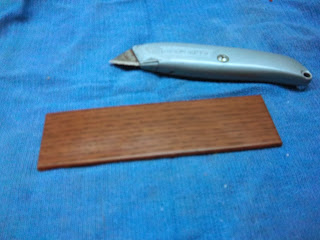Man, it seems this “little” dashboard project has
taken forever!! Time to button it up and move on to other things. In order to
do so, Old Biddy had to be started so I could check to see if the gauges were working. I found that she had a minor choke cable issue, which is why she wasn’t starting. But
now she starts.
Once the dashboard (fascia) was secured in place,
the parcel shelf was finally secured in place, also.
I started to work on the side panels to the
sub-frame. The white paper template had to be carefully cut and refitted about ten times before it fit correctly. It was then transferred to Masonite and cut out. I hope to have them finished next week.
And, I finally got around to working on the blanking
plate. It was scratched and had two holes drilled in it.
I put the same walnut-grained shelving paper as the dash on it to
match.
I temporarily set it in place for now. It will have an Airguide
altimeter stuck to it when finally installed.
Next, I will move on to working on the last two
electrical issues that need to be figured out; getting the interior light and the
horns working.
Thanks for visiting.
Toddy














